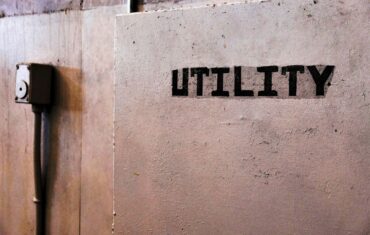Before COVID-19, the housing market was strong with low mortgage rates and median listing prices had increased by 4.4% year-over-year. Once the spread of the virus became a concern for those living in the United States, state responses that included stringent lockdown and social distancing created new hurdles and questions about listing and closing on a house during the crisis.
While the unemployment rate is in tatters, the impact of COVID-19 on home buying and selling appears to be minimal. That’s something to celebrate, but there are concerns about how current homeowners who are facing unemployment or underemployment will fare once protections outlined in the CARES Act expire.
Here’s how homebuyers, homeowners, and renters have been affected by the pandemic so far.
Signs of a Recovering Housing Market amid COVID-19:
One market report from Zillow shows that pending sales and new listings are up in May, indicating that homebuyers and sellers are returning after a dismal spring homebuying season.
Subscribe to our YouTube Channel to see new episodes of the 90 Second Real Estate Rundown!
Mortgage rates are low, median listing prices are steady, but inventory is down
Some key data trends show that the hit in the real estate market was short-lived and major real estate companies are responding positively to the changes:
- Interest rates are at a 50 year low at 3.1%
- Mortgage applications are above 9% this time last year
- The four major title underwriters reported record increases in opened title orders for March compared to last year as homeowners flocked to refinance and take advantage of low-interest rates
- Newly pending sales are up by nearly 50% for May compared to the same period in April
- Sales for newly constructed homes were expected to fall 22% but went up 1% instead
- Homebuying demand was 16.5% higher for the week of May 17 than it was before the pandemic
- Zillow’s iBuying operations have resumed and added five new markets
- Of the 1,000 Redfin employees furloughed at the beginning of the crisis, 350 were re-hired to meet the sudden increase in homebuying demand
- Limited inventory is pushing list prices up despite expectations that they would drop throughout the year.
- New forecasts for home price drops have been adjusted to a 1.8% decrease from the initial 2.7% drop from April to October 2020 with a steady recovery through 2021.
- Homebuilder sentiment bounced higher than expected in May to 37, but still remains below 50, which is considered positive.
Homebuying during the COVID-19 Crisis
Some economists are predicting that the 30-year mortgage rate will dip below 3% before the end of 2020. While the historic low mortgage rates are one rare positive for consumers during the COVID-19 crisis, it’s unlikely that everyone looking to buy will be able to take advantage of them.
Economic uncertainty has mortgage lenders worried about potential delinquencies, which is warranted given that mortgage delinquency rates follow the rise and fall of unemployment rates. To mitigate their concerns, they are requiring higher credit scores and larger down payments from mortgage applicants.
It’s important for homebuyers and homeowners to still shop around for the best mortgage rate right now because there’s a chance that some lenders may offer a surprisingly high rate to hinder the massive interest in refinances or assuage their burden of risk.
While unemployment numbers are alarmingly high, the majority of Americans are still working. Many of those are salaried employees working from home, so even though life isn’t back to normal, for these people, their financial stability has remained uninterrupted.
However, with jobless claims currently at 40 million, listing prices stabilizing, housing starts dipping to the lowest level since 2015, and inventory remaining low, it’s hard to imagine that many of those who wish to buy starter homes with lower price points will have the opportunity.
How the coronavirus has changed what homebuyers want
For those in the financial position to purchase, the way we view our homes and what we love about them has been forever altered by stay-at-home orders.
These features are becoming more popular with home searches, especially for workers who hope to continue telecommuting after stay-at-home orders are lifted:
- Dedicated office space
- Larger homes
- Closer to family and/or friends
- More rooms
- More affordable home
- More outdoor space
- More rural with fewer neighbors
- Near a vacation destination
- Private pool
The open-concept design that has been trending for several years may come to an end as working from home amidst the chaos of family life has put a premium on walls, doors, and a dedicated space for work. Listing agents have noticed this interest and started mentioning “home office” in 8.2% of all for-sale listings. Homebuilders may respond by adjusting home designs to add office spaces in the future.
How has the real estate closing process changed?
Homebuilding, settlement services, and other real estate-related services were deemed essential for the most part in every state. Still, at the beginning of the crisis, there were lots of restrictions put in place and confusion around which businesses could remain open, hampering the sale of homes under contract.
Open houses and showings were cancelled, so real estate agents had to rely on virtual showings and video tours to catch the eye of homebuyers. Once an offer was made and a real estate contract executed, adapting to county, lender, and underwriter responses amid the COVID-19 pandemic was initially difficult for many title professionals. Many county recorder offices were working with reduced staff, and others didn’t have eRecording options, causing delays. Some lenders and underwriters who are hesitant to allow for remote online notarizations remained adamant against the use of remote online notarization while executive orders from governors allowed for the temporary use of remote ink signings in lieu of a state law explicitly allowing for RON.
Settlement agents had to come up with some creative ways to address safety concerns during the closing. One survey of title agents from the American Land Title Association showed that 60% are offering drive-up closings, 21% are offering remote online notarizations (RON), and another 16% provide emergency remote ink signings (RIN) using apps like Skype or FaceTime to monitor the signing.
There’s no doubt that COVID-19 has pushed the real estate, mortgage, and title industry toward introducing more technology into the closing process than ever before. The greater acceptance of remote online notarization has quickly accelerated as it provides an option for consumers that will remain appealing long after the pandemic ends.
Listen: A Florida loan signing agent talks about getting RON certified!
Mortgage Delinquencies, Eviction Filings, and Unemployment
The Mortgage Bankers Association has been tracking the number of borrowers who fall behind in their payments for almost 40 years, and in that time, there has been a positive correlation between unemployment and mortgage delinquencies.
A mortgage is considered delinquent if the borrower fails to make payments according to the mortgage loan terms indicated in the closing documents. Late fees may be applied at any time. If the borrower is continually unable to make mortgage payments, a lender may file for foreclosure.
Before COVID-19, the delinquency rate for mortgage loans on one-to-four unit residential properties was 4.36%. The rate for “seriously delinquent” mortgages, which a mortgage past due for 90 days or more, was at one of the lowest on record: 1.2%. These are borrowers who are in serious danger of default and subsequent foreclosure.
Lenders may choose to give borrowers options to prevent foreclosure. Mortgage forbearance, which temporarily suspends mortgage payments (but does not eliminate the debt owed) may be one option. The terms of forbearance are negotiated between the borrower and the lender.
Forbearance and other assistance programs are available for delinquent borrowers with mortgages guaranteed by Fannie Mae and Freddie Mac during the COVID-19 pandemic. This means more than two-thirds of all mortgage borrowers have options to request forbearance for up to a year to prevent foreclosure stemming from the pandemic.
While the mortgage forbearance and delinquency rates may increase along with the unemployment rates as the pandemic persists, overall, these rates will likely remain lower than eviction filings rates because homeowners have the option to tap into the equity of their homes to make their payments. There’s no such option for renters.
Mortgage Delinquencies and Forbearance
Mortgage delinquencies peaked at 10.06% back in 2010 three years after the start of the housing crisis that triggered the Great Recession. In the fourth quarter of 2019, the Mortgage Bankers Association reported the lowest rate of mortgage delinquencies since beginning the National Delinquency Survey in 1979!
The effects of increased unemployment due to COVID-19 on mortgage delinquency may not be fully realized until months or years from now. Historically, the mortgage delinquency rates follow closely with unemployment rates.
More than 4 million homeowners are taking advantage of forbearance, but the MBA is requesting that servicers report those loans as delinquent if the payment is not being made based on the original loan terms. This is the same approach taken for reporting delinquency data after natural disasters.
Additionally, forbearance doesn’t always indicate whether a homeowner has lost their employment. Under the CARES Act, a borrower isn’t required to submit documentation to demonstrate hardship, so many may be seeking forbearance in anticipation of future job loss.
The forbearance rate may remain lower than the unemployment rate because homeowners are in a much better financial position than renters.
Renters may be facing a wave of eviction filings
During economic hard times, media stories often focus on statistics affecting homeowners. The Great Recession peaked in 2010, and we saw a lot of coverage on the more than one million foreclosure proceedings that were completed nationally that year. In comparison, there are almost one million renters evicted every single year in the United States.
Even when the nation is seeing significant economic growth and stability, statistics on tenants point to an ongoing problem of displacement and potential homelessness with national eviction filings rates and evictions remaining fairly consistent.
Renters are more vulnerable to housing insecurity for several reasons:
- Whereas homeowners may be able to take advantage of forbearance, renters have fewer options to avoid eviction
- Renters are more likely to be single while homeowners are more likely to be married. This means that if one spouse loses their job, the other may be able to still financially support the family.
- Renters’ rights vary wildly from one state to the next, and many rent moratoriums are set to end soon before the pandemic does.
- The median household income of renters is $41,000. Homeowners with a mortgage have a median household income of $93,000 while homeowners without a mortgage have a median income of $55,000.
- Renters are also less likely to have adequate savings compared to homeowners.
Similar to homeowners, there are some protections under the CARES ACT for renters who meet certain criteria including those living in properties with:
- Federally-backed mortgages
- Public housing
- Section 8 voucher or project-based Section 8 housing,
- And other federally subsidized housing
As statewide moratoriums are lifted, eviction notices and hearings are expected to increase. Legal advocates for renters are encouraging those who receive notices to vacate or a petition for eviction to check the CARES Act to see if they are protected. If so, eviction processes shouldn’t be going into effect until July 24th.
Unfortunately, government measures to protect renters haven’t taken into account the intermediate strain facing middle-class landlords who hold a small portfolio of units, creating an ineffective long term solution to prevent mass evictions.
A wave of eviction filings are expected as soon as the CARES Act deadline hits as a result.
Uncertainty remains about the overall economic recovery
Economic experts’ opinions about what the recovery will look like takes various forms including W, U, L, V, and even a dreaded O-shape, which predicts a surge of infections crippling the progress of the economic recovery and bringing us back to where it started.
For housing, Anthony Casa, chairman of the Association of Independent Mortgage Experts, and Lawrence Yun, chief economist at the National Association of Realtors, agree that the market will see a V-shaped recovery with a sharp return to previous home sales as more local economies reopen.
After all, before the coronavirus took hold in the United States, there were no other factors impeding home sales. In the past, as Yun points out, real estate has “led economic recovery after recessions in almost every period going back to 1950.”
Unfortunately, the real estate sector will likely be an outlier, and other industries may have a more difficult time recovering. Some more bad news is expected as the unemployment rate is expected to jump from 14.7% in April to 19.8% in May, and many workers may not ever return to their jobs even if their employers reopen as businesses re-evaluate which employees are essential to operations.












